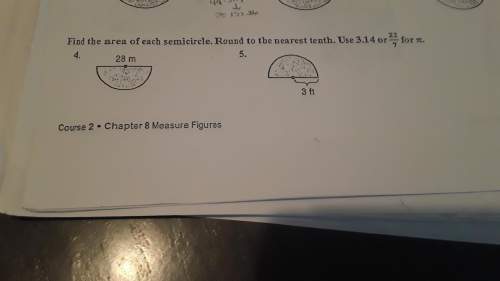
Mathematics, 02.04.2020 03:08 jakeyywashere
Write the absolute value equations in the form x−b =c (where b is a number and c can be either number or an expression) that have the following solution sets:
All numbers such that x≤−14.
Two solutions: x=−2, x=−32.
Two solutions: x= 1 /2 , x=− 1/3 .
All numbers such that x≥5.
All numbers such that x≤5.
All numbers such that x≤−14.
All numbers such that x≥−1.3.

Answers: 3


Other questions on the subject: Mathematics

Mathematics, 21.06.2019 16:20, jennyferluna0216
Refer to interactive solution 17.45 to review a method by which this problem can be solved. the fundamental frequencies of two air columns are the same. column a is open at both ends, while column b is open at only one end. the length of column a is 0.504 m. what is the length of column b?
Answers: 1


Mathematics, 21.06.2019 19:30, bakaoffire
Mr. brettler is hanging up a 5-foot tall rectangular welcome sign in the gym. he has drawn a sketch on a coordinate grid. he has the lower vertices of the sign at (9, –3) and (–6, –3). where would the upper vertices be on the grid?
Answers: 1

Mathematics, 21.06.2019 20:10, morgantisch25
A. use the formula for continuous compounding with the original example: $1000 invested at 2% for 1 year. record the amount to 5 decimal places. use a calculator. b. compare it to the result using the original compound interest formula with n = 365 calculated to 5 decimal places. which has a larger value? explain.
Answers: 1
You know the right answer?
Write the absolute value equations in the form x−b =c (where b is a number and c can be either numbe...
Questions in other subjects:

Mathematics, 02.09.2019 19:30

Mathematics, 02.09.2019 19:30

Chemistry, 02.09.2019 19:30



Mathematics, 02.09.2019 19:30



History, 02.09.2019 19:30




